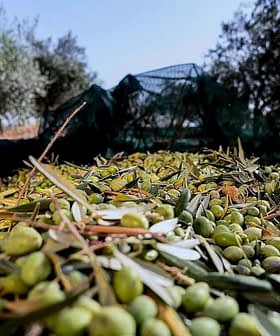The first few weeks of the olive harvest in Puglia confirmed that the 2022/23 crop year would be challenging for farmers in Italy’s largest olive oil-producing region.
Olive yields are so low in certain areas that some growers are not bothering to harvest, and some millers are not opening their facilities.
If we look at the whole of Apulian olive production, we do not have a 30 percent drop as some had predicted. We are running way lower than that.
Growers who have decided to harvest also face significant cost increases, while millers deciding to open up for the season are confronting skyrocketing energy prices.
“The conditions for a complex harvesting season were very clear weeks ago, and now here we are, in a scenario which is probably even more challenging than forecasted,” Elia Pellegrino, president of the Italian association of olive oil millers (AIFO), told Olive Oil Times.
See Also:2022 Olive HarvestThe ongoing drought, repeated summer heatwaves and many farmers entering an ‘off-year’ in the natural alternate bearing cycle of the olive tree have created conditions that are expected to yield an abysmal harvest.
Along with these factors, the southern areas of Puglia continue to face the slow expansion of Xylella fastidiosa, an olive tree-killing bacteria.
Xylella fastidiosa is increasingly present in Brindisi and Lecce provinces. Affected areas have seen their yields fall between 50 and 70 percent compared to the average before the appearance of Xylella fastidiosa.
“If we look at the whole of Apulian olive production, we do not have a 30 percent drop as some had predicted,” Pellegrino said.
“We are running way lower than that. In Bari, and probably in the rest of the region, we are at 30 percent of available production, which means that millers are only working a few hours per day,” he added. “There are not many olives, and energy costs remain high.”
Millers are the main middlemen between growers and retailers, purchasing olives from the former to transform them into oil for the latter to resell.
As a result, they are exposed to the most financial risk when buying expensive olives during a time of rising production costs with no guarantee that they will receive high enough prices from retailers to cover their costs.
“If we look at the costs for growers which derive from the number of fruits on the trees and if we take into account the operating costs for millers, at the moment we do not have a sustainable economy for the transformation business,” Pellegrino said.
According to olive farmer associations, it is time for the whole production chain to develop a solidarity mechanism through which all parts absorb the costs of seasonal production uncertainties.
“The message from the current campaign is the need for all stakeholders to sit down at the negotiating table,” Pellegrino said. “Not only growers and millers but also producers and large retailers, so that the olive oil market and prices stay where they need to be to ensure a minimum amount of support for all parties.”
Luca Lazzàro, president of Confagricoltura Puglia, a farmers’ association, said regional olive production is expected to fall by 50 percent compared to last year.
“If we also consider the fuel costs, which have doubled, we can see why some olive growers have decided to leave fruits on the trees,” he said. “We need immediate public support. We risk this campaign affecting consumers, hurting producers and impoverishing the families of the sector’s workers. Most olive growers are already exhausted after almost 10 years of struggling against Xylella fastidiosa.”
See Also:Olive Oil Tourism GuideThe only good news for the sector comes from oleotourism. Warm weather has coincided with a national holiday, leading some Italians to visit farmhouses in Puglia.
According to the Coldiretti Puglia, another farmers’ association, the demand for agri-tourism experiences remains strong, and the number of active farmhouses in the region has grown two percent in the last year.
Of the more than 950 companies, 91 percent offer accommodation, 72 percent focus on food services and 47 percent offer wine and olive oil tasting events.
Local authorities recently approved a new law creating wine and extra virgin olive oil routes to take advantage of the growing agritourism trend in Puglia.
The legislation funds the creation of oleotourism centers and information points. Each route will be marked to help tourists visit olive groves, farmhouses, mills, restaurants and tasting venues.
The broader scope of the law includes organizing educational and cultural activities surrounding olive oil and wine production and supporting technical training and market analyses.
The law also funds olive oil and wine research centers to host workshops for farmers and other agritourism companies.
“This initiative looks to a future where the discovery of local products accompanies traditional tourism opportunities,” said Davide Bellamo, the leading sponsor of the legislation. “By sustaining local cultural, educational and recreational activities connected to olive oil and wine, we can also further sustain our food exports.”








